Did you know that properly fertilizing your philodendron can increase its growth rate by up to 50%? To achieve lush and vibrant leaves for your indoor plant, it is important to provide it with the nutrients it needs.
I’ve learned how to help indoor philodendron plants thrive through trial and error. And today, I’m spilling all my secrets on fertilizing philodendrons for optimal growth. Get ready for your plant to be the envy of all your friends!
Why Fertilizing Philodendrons Matters
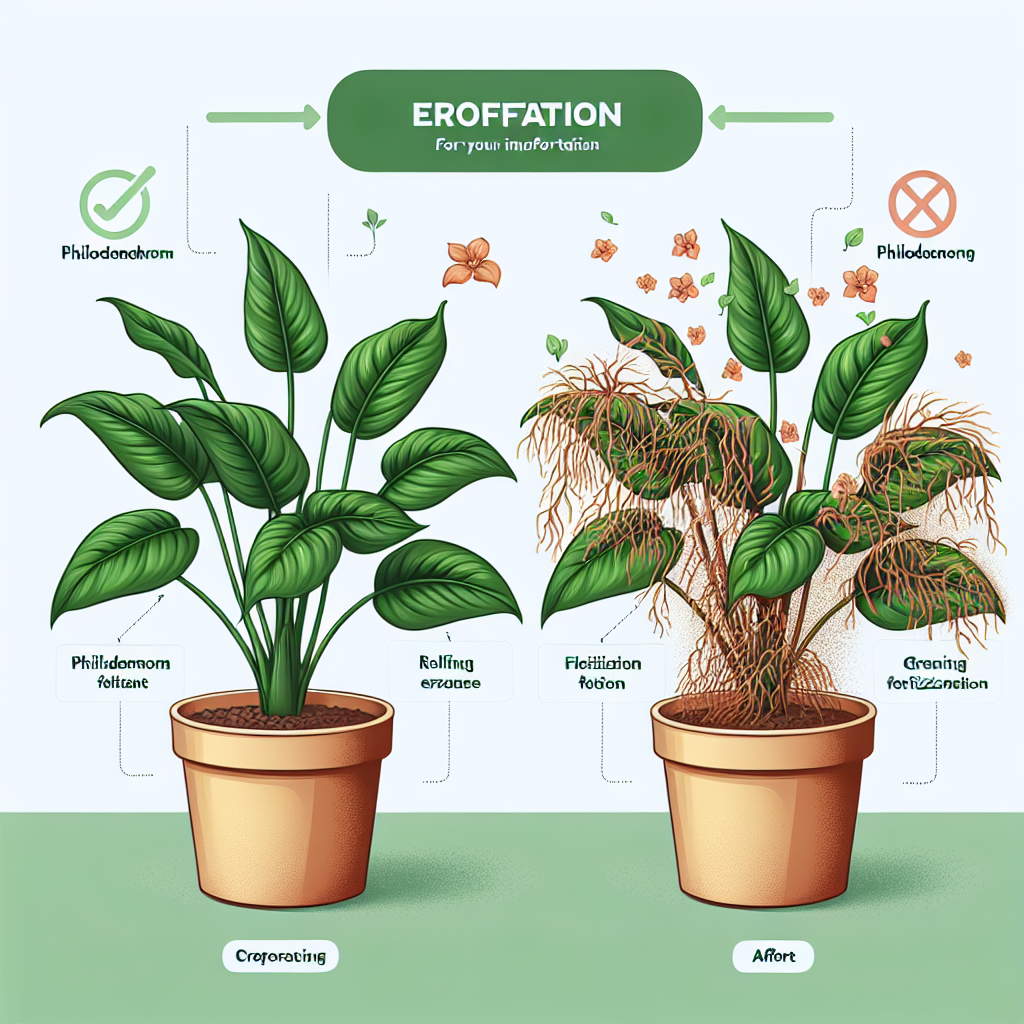
Before we dive into the nitty-gritty of how to fertilize, let’s talk about why it’s so important. Philodendrons are native to tropical regions of the Americas, where the soil is naturally rich in nutrients.
But when we grow them as houseplants, they are limited to the nutrition we provide in their potting mix. Over time, your philodendron will use up the nutrients in the soil. This can cause:
-
Slow or stunted growth
-
Yellowing leaves
-
Smaller leaf size
-
Weak stems
But don’t worry—regularly fertilizing your philodendron will keep it healthy, growing vigorously, and looking its best. Providing your plant with essential nutrients is akin to giving it a powerful dose of vitamins!
The Best Fertilizer for Philodendrons
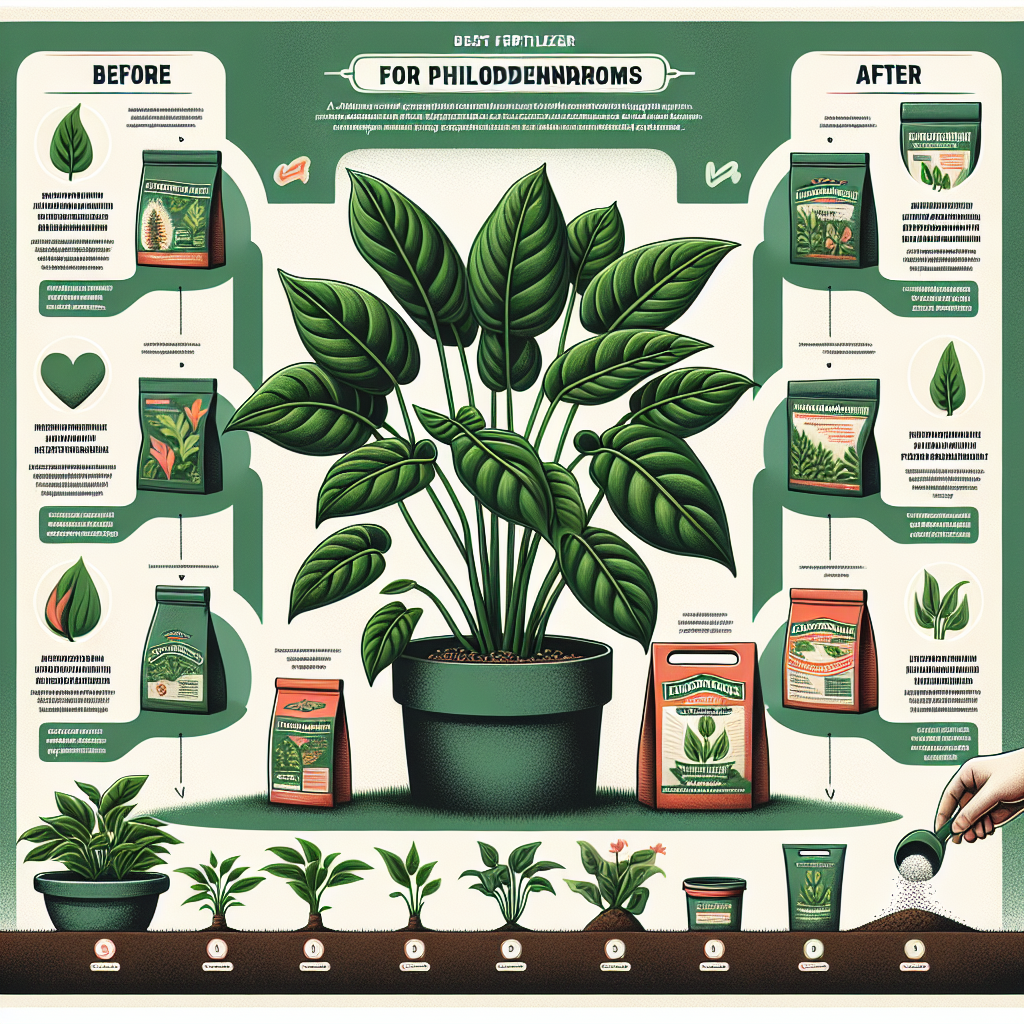
When it comes to choosing a fertilizer for your philodendron, I recommend using a balanced, water-soluble fertilizer made for houseplants. A balanced fertilizer contains equal amounts of the three main nutrients:
| Nutrient | Benefits |
|---|---|
| Nitrogen (N) | Promotes green, leafy growth |
| Phosphorus (P) | Stimulates healthy root growth and flowering (though most philodendrons don’t flower indoors) |
| Potassium (K) | Supports overall plant health and disease resistance |
A fertilizer labeled “20-20-20” contains 20% of each of these nutrients and is a great choice for philodendrons. I like using liquids or water-soluble powders because they’re easy to mix into your watering can. Some of my favorite philodendron fertilizers include:
-
Dyna-Gro Liquid Grow 7-9-5
-
Jack’s Classic 20-20-20 All-Purpose Fertilizer
-
Miracle-Gro Indoor Plant Food (Liquid)
How Often to Fertilize Philodendrons
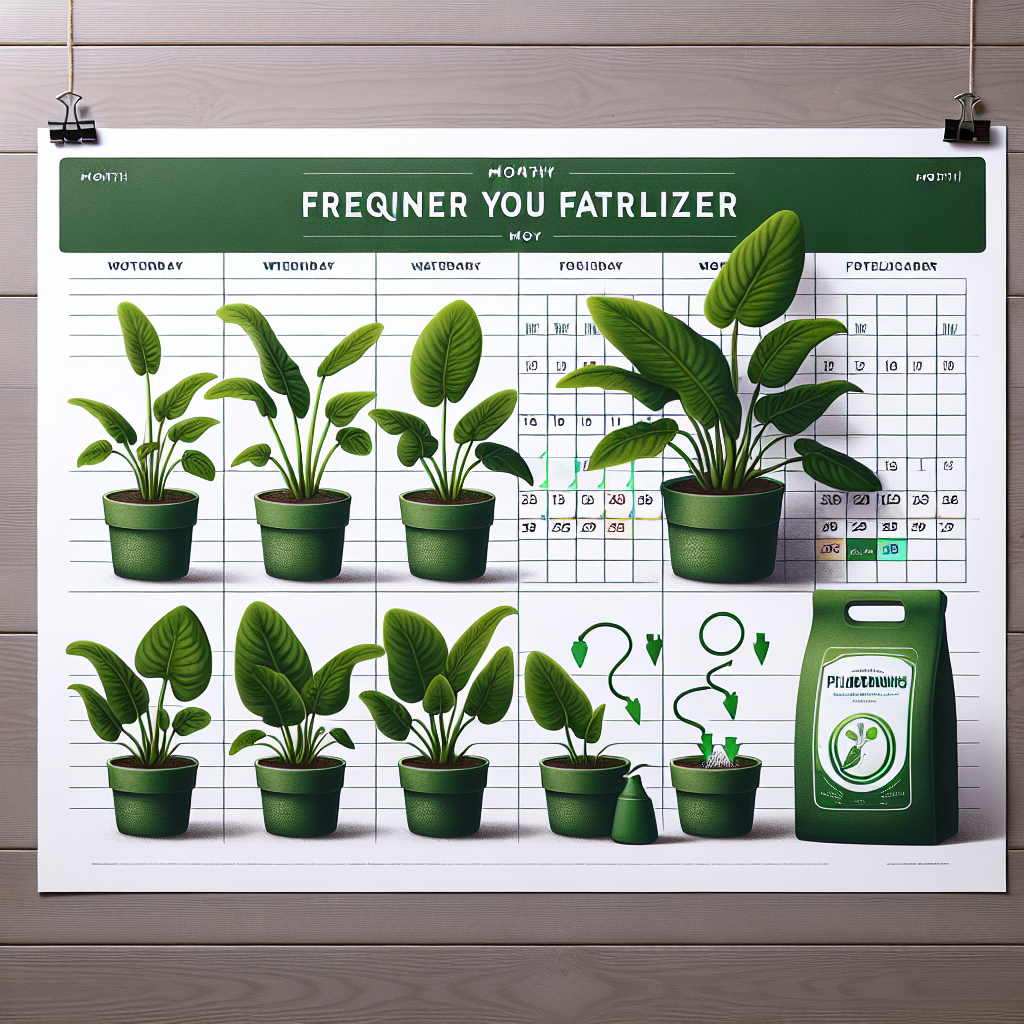
Now that you’ve got your fertilizer picked out, you’re probably wondering how often to feed your plant. The answer depends on the time of year.
| Season | Fertilizing Frequency |
|---|---|
| Spring and summer (active growth) | Every 2–4 weeks |
| Fall and winter (slower growth) | Every 6–8 weeks |
I like to mark fertilizing days on my calendar at the beginning of the month so I don’t forget. Consistency is key to providing optimal nutrition! If your philodendron’s leaves are turning yellow or brown at the tips, it may be a sign that you are using too much fertilizer. Cut back to once a month or dilute the fertilizer more.
The Best Way to Fertilize Your Philodendron

When it comes time to actually fertilize your plant, I recommend the “weakly, weekly” method. This means fertilizing with a diluted solution (1/4 to 1/2 strength) every time you water during the growing season. This provides a steady supply of nutrients without overwhelming your plant. Here’s my step-by-step process:
-
Fill your watering can and add the appropriate amount of fertilizer per the package instructions to create a weak solution. I usually do 1/4 to 1/2 teaspoon per gallon of water.
-
Water your philodendron thoroughly with the fertilizer solution until it runs out of the drainage holes. This ensures all the roots have access to the nutrients.
-
Discard any excess solution that collects in the saucer to avoid root burns.
-
Jot down the date you fertilized to keep track.
Easy, right? You’ll start to see a noticeable difference in your philodendron’s growth and vibrancy in just a few weeks.
Signs Your Philodendron Needs Fertilizer
Even with the best care routine, sometimes our plants can start to look a little lackluster. Here are some common signs your philodendron is craving more nutrients:
-
Slow or stunted growth
-
Pale, yellowing leaves
-
Smaller than normal new leaves
-
Weak, spindly stems
If you notice any of these issues and you haven’t fertilized in a while, it’s time to break out the plant food! Your philodendron will thank you.
Troubleshooting Common Philodendron Fertilizing Problems
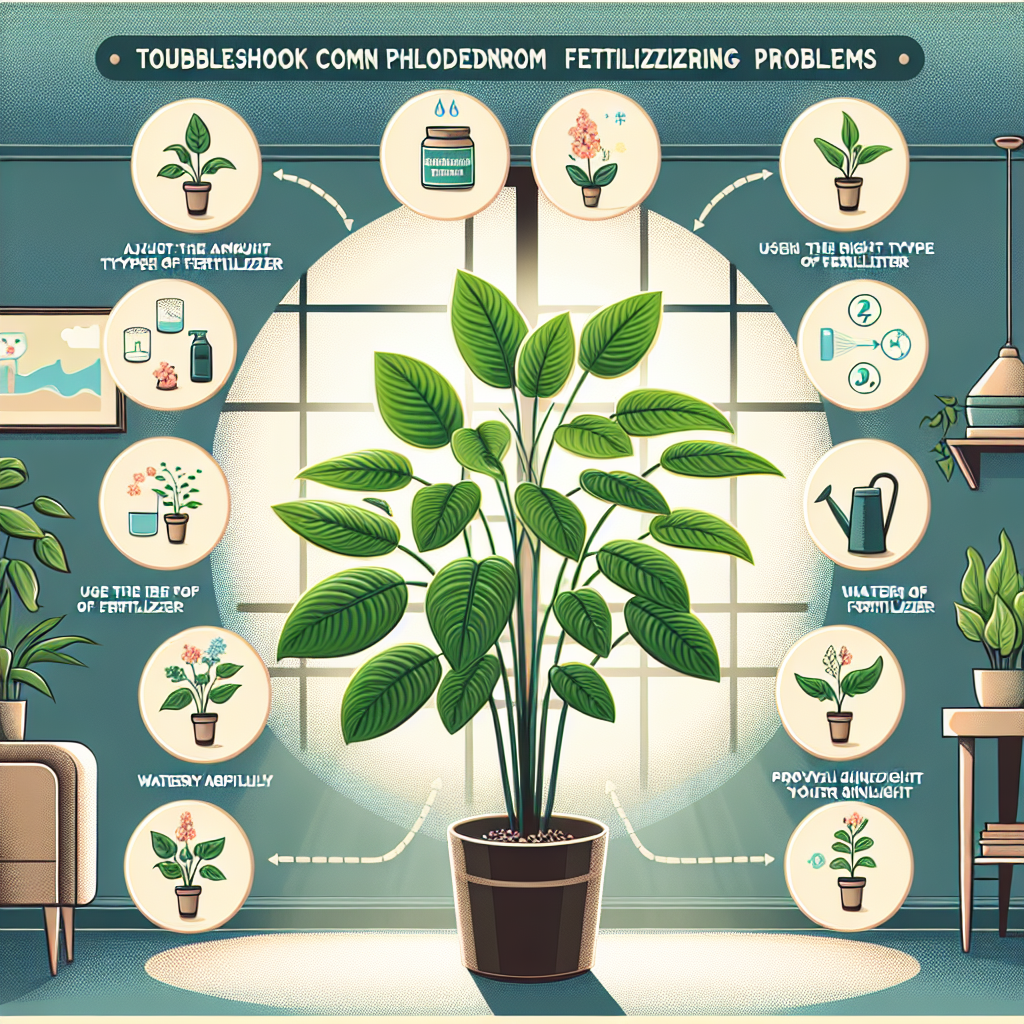
While fertilizer is essential for optimal growth, sometimes issues can pop up. Here are some common problems and how to fix them:
| Problem | Cause | Solution |
|---|---|---|
| Yellow or brown leaf tips | Over-fertilizing | Flush soil with plain water and dilute fertilizer more next time |
| Fertilizer crust on top of soil | Buildup of salts | Remove crust and top inch of soil, then flush with plain water |
| No new growth after fertilizing | Fertilizer burn or other issue | Make sure you’re diluting fertilizer properly, checking for pests, and ensuring proper light and watering |
If problems persist, don’t hesitate to reach out to a fellow philodendron lover or garden center expert for advice. We’ve all been there!
The Bottom Line on Fertilizing Philodendrons
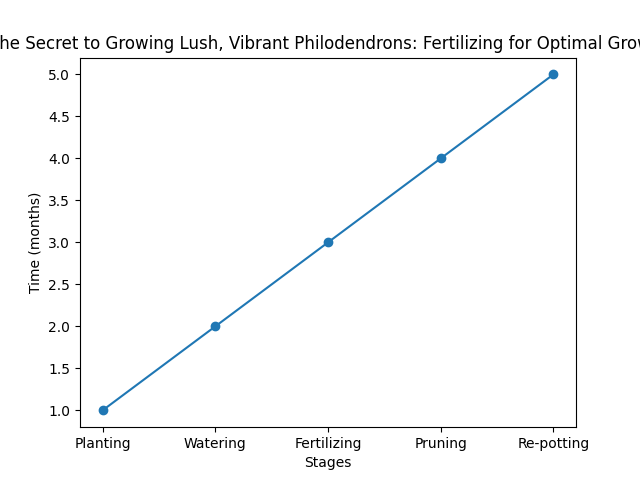
Fertilizing your philodendron is one of the simplest ways to take your plant’s growth and health to the next level. For a healthy and long-lasting plant, make sure to give it the necessary nutrients regularly and keep an eye out for any problems. This will result in a thriving and vibrant plant.
To continue your philodendron care journey, check out my articles on how to start a philodendron, propagating philodendrons, rooting philodendron cuttings, replanting philodendrons, and watering philodendrons to help your plant live its best life.
Happy growing!
This article is part of our comprehensive Philodendron Care Guide at Plantastic Haven. For more expert advice on caring for your favorite houseplants, visit our House Plants section.
fertilizing-philodendron-plants-for-optimal-growth
Related Resources
- This principle is further explored in our detailed examination of Philodendron Care: Expert Tips for Thriving Plants [2024] Philodendron Care: Expert Tips for Thriving Plants [2024].
- For more insights on this topic, you might find our exploration of How to Prune a Philodendron for Lush Growth [Expert Guide] valuable How to Prune a Philodendron for Lush Growth [Expert Guide].
- To see how this works in practice, our Philodendron Verrucosum Care: Expert Tips for Velvety Leaves examples demonstrate real-world applications Philodendron Verrucosum Care: Expert Tips for Velvety Leaves.